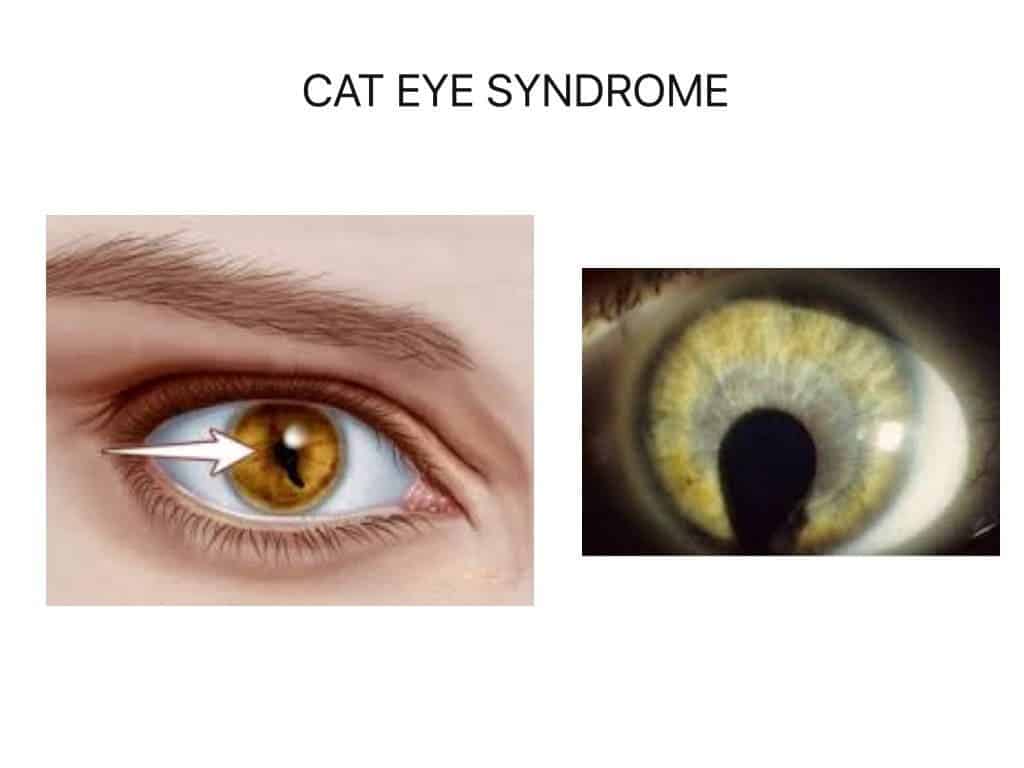
Faulty chromosomes — what lies beyond the ‘cat eyes’
Human cells normally consist of 23 pairs of chromosomes. In individuals with a normal chromosomal make-up, the 22nd pair is made of a short arm, known as 22p, and a long arm, known as 22q. However, in individuals with Cat-Eye Syndrome (CES), the short arm and a region of the long arm are present four times rather than twice in the body’s cells — a phenomenon known as tetrasomy. Some individuals with CES have 3 copies in the 22q11 region — this is known as partial tetrasomy.
The problem has been identified for more than a century, but cat-eye syndrome was more specifically defined in 1965, when researchers reported that some affected individuals have only one or neither of these features.
The term “cat-eye” is used because a distinctive eye abnormality occurs in some of the affected individuals. The defect, known as coloboma, involves the partial absence of ocular tissue in the iris, often affecting both eyes, leading to the elongated blackened area of the pupil which looks like a cat’s eye. However, not all people suffering from this syndrome exhibit this abnormality — about half of them have regular looking eyes.

- CES;
- chromosome 22, inverted duplication (22pter-22q11);
- chromosome 22, partial tetrasomy (22pter-22q11);
- chromosome 22, partial trisomy (22pter-22q11);
- Schmid-Fraccaro syndrome.
Unfortunately, as cool as this might look, there is a number of medical problems associated with this condition. One of the most obvious issues has to do with poor vision, i.e. blurred and ghost-like imagery. The location and size of the defect on the eye will determine the degree of vision alteration. If the coloboma only involves the iris, then vision will not be affected. In the majority of cases of CES, however, a more extensive coloboma is present, which involves other layers of the eye — the result is vision defects and even blindness.
Besides coloboma, two-fifths of people with CES also have preauricular skin tags/pits — an ear defect that causes the development of tags or pits in front of the ears — and anal atresia (absent anal canal).
Although this classic triad of symptoms is the most common, every case of CES is unique. Many people with CES also suffer from:
- several ocular defects, including down slanting eyelid folds (palpebral fissures) and widely spaced eyes (ocular hypertelorism),
- small depressions or growths on the ears (preauricular pits/tags),
- kidney problems (missing, extra, or underdeveloped kidneys),
- short stature,
- heart defects;
- hernia,
- intellectual disability – only a fraction of individuals with CES have normal intelligence,
- cardiac defects (such as TAPVR),
- skeletal and abdominal defects,
- abnormal facial features,
- a number of other organ-related issues.
These associated symptoms vary greatly in occurrence and intensity — while some people have very few or no significant manifestations, others can exhibit the full spectrum of manifestations.
It’s not clear how many people suffer from CES, but studies conducted in Switzerland concluded that it may affect 1 in 50,000 to 1 in 150,000 people. Because some affected individuals develop few associated features, they may be unaware that they have CES, so this may be an underestimate.
Disease management can be quite difficult, requiring a special tailored approach for each case. Chromosomal studies may be recommended for parents of affected individuals, such as to determine whether they exhibit mosaicism for the marker chromosome. Research is currently underway to determine whether there is a connection between the size of a person’s cat eye syndrome chromosome and the number and severity of symptoms the person shows.
Was this helpful?